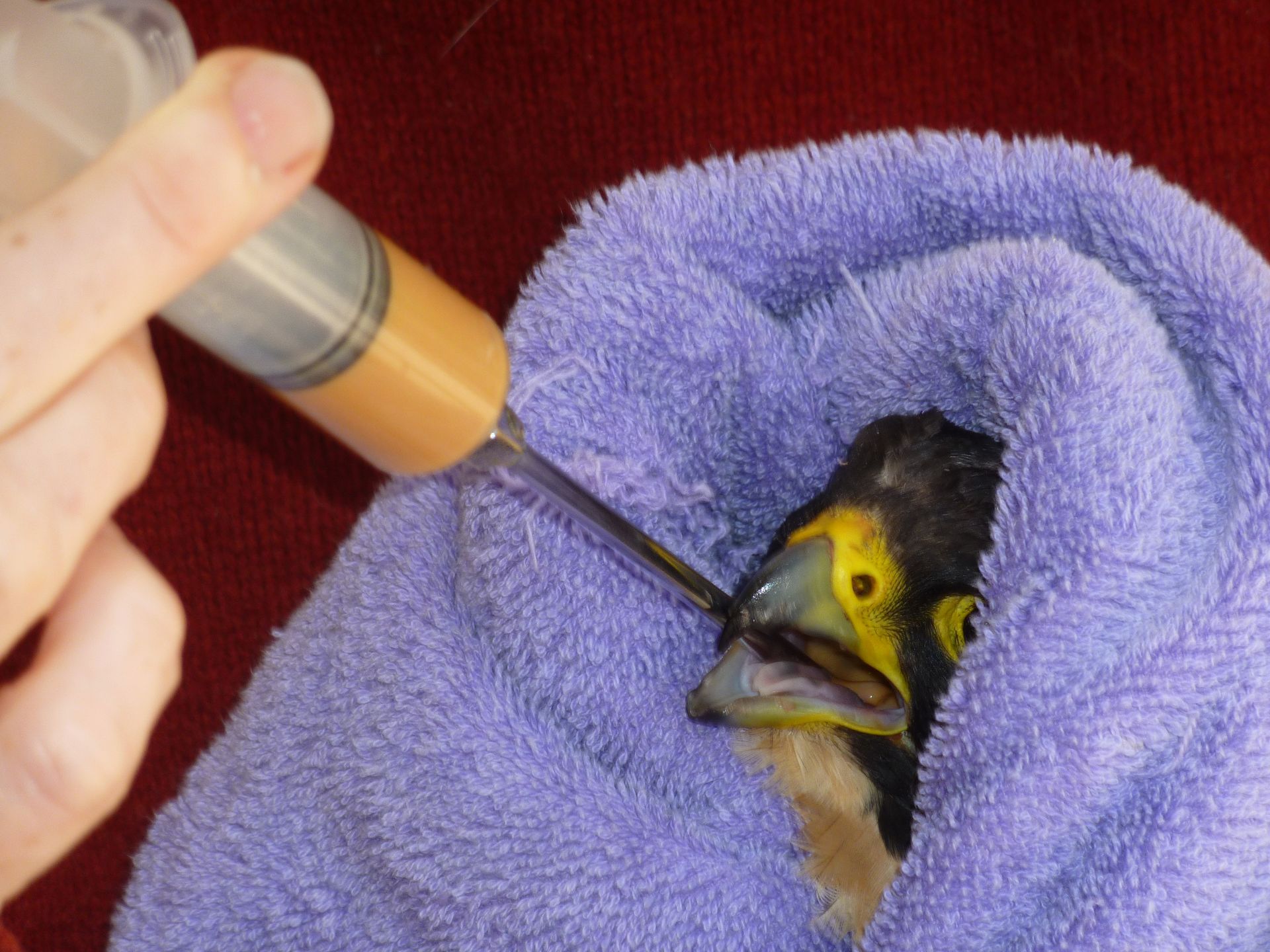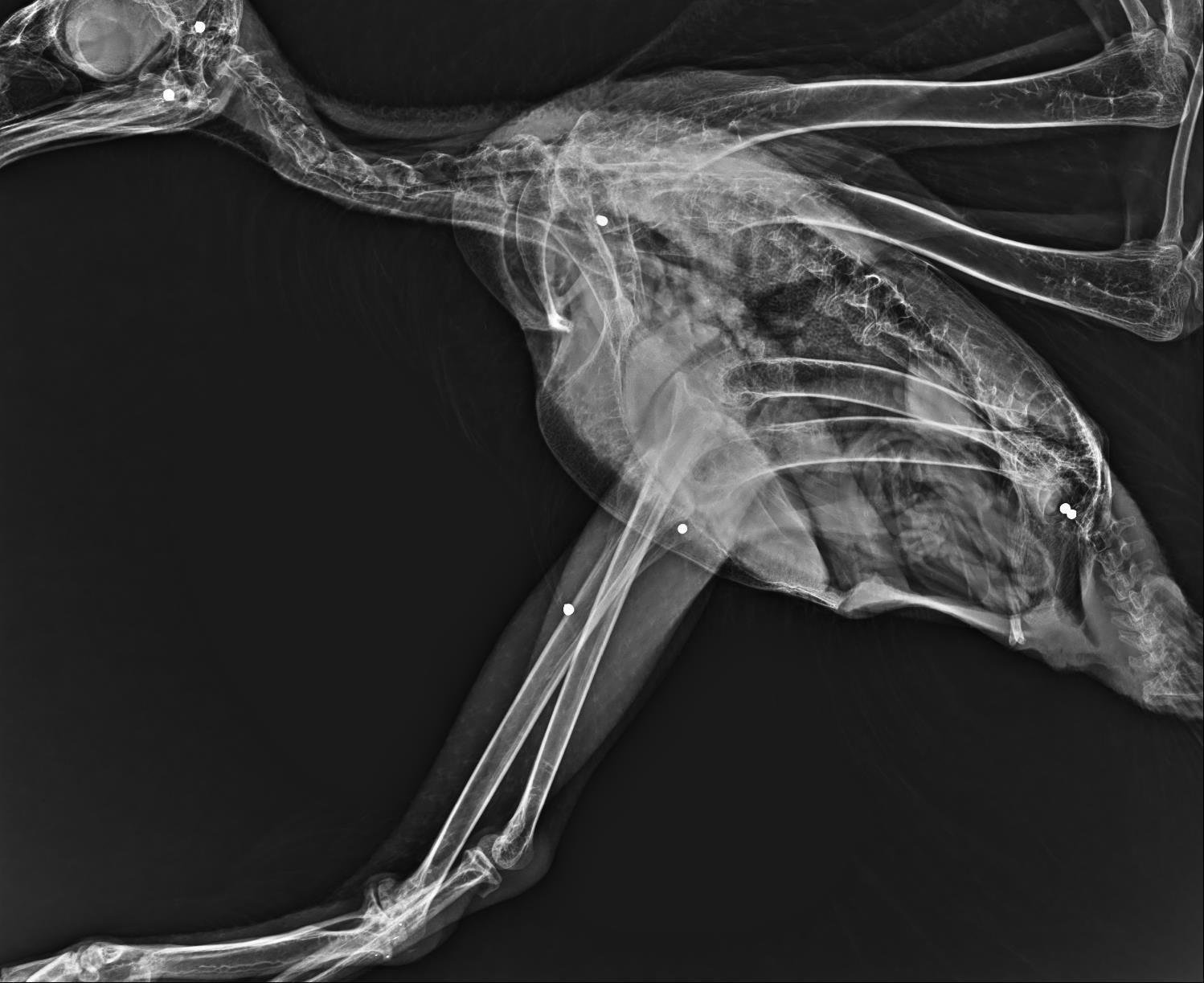THREATS AND
CONSERVATION
Rehabilitation cases highlighting the threats to
Australian raptors.
Photographer: Matt Wright
WILDLIFE CRIMES - Poaching and the wildlife trade
The national and international trade in illegally obtained wildlife was estimated at $32 billion USD in 2021. This trade is highly organised and leads directly to the decline and extinction of iconic species worldwide. As Australia is home to many unique and highly sought after avian and reptilian species, illegal poaching and export of native animals for markets in Europe, Asia and North America is a significant threat to wildlife populations and biodiversity of this country. Current legislation at the national level is an effective means of reducing this type of crime at the point of export, but monitoring and tracking poaching at the source is challenging, due to the geographical size of the country, resources and state-based differences in wildlife legislation.
WARNING - GRAPHIC IMAGES BELOW
Australian Kestrel chicks illegally taken from the nest then thankfully handed in for rehabilitation rather than be kept as pets or sold.
Unfortunately, the nest site of these chicks could not be ascertained, and so these little falcons were hand raised, allowing hunting instincts to develop naturally with pre-release physical fitness activity in the Peter Spitzer free flight aviary at the Higher Ground Raptor Centre (HGRC). They were released back into the wild at the age that they would normally disperse from their natal area.
Photographer: Peg McDonald
Peregrine Falcon illegally taken from the wild and later confiscated by the authorities.
This adult falcon had been found by members of the public, who were unaware of Australian wildlife laws and the existence of licensed wildlife care and rehabilitation groups. The bird had been kept illegally (though well-intentioned) in an urban home for several months before it was confiscated by state wildlife authorities.
This bird had hunting and flight abilities intact and after pre-release physical fitness activity over several weeks in the Peter Spitzer free flight aviary was returned to her territory.
Photographer: Peg McDonald
Wedge-tailed eagle illegally taken from the wild and later confiscated by authorities.
This young Wedge-tailed eagle had been found injured, but instead of seeking veterinary attention, the finder had decided to keep the bird illegally, and used jesses around the lower legs (in NSW, use of jesses for restraint is restricted to licenced exhibition facilities only) to prevent escape from captivity.
The extent of the initial injuries, in addition to the trauma caused by the inappropriate use of jesses, was revealed following confiscation by the authorities. Sadly, the severity of the bird’s injuries resulted in humane euthanasia.
Photographer: Peg McDonald
WILDLIFE CRIMES - illegal use of firearms and traps
All birds of prey are protected in all States and Territories of Australia, and it is therefore illegal to kill, injure, take from the wild, hold captive, trade or band any raptor without a permit issued by the relevant Government authority, or unless "special conditions" apply. In NSW, birds of prey are protected by the Biodiversity Conservation Act 2016 (BC Act).
The use of steel-jawed traps is prohibited in NSW, and is an offence under the Prevention of Cruelty to Animals Act 1979. Only soft-jawed spring traps and mesh barrel traps may be used to trap rabbits. Trapping in this manner applies to non-native species only.
This Peregrine falcon had been shot by an air rifle or pellet gun. She was radiographed by Dr Charlie Carter at the Southern Highlands Veterinary Centre (SHVC).The damage was thankfully “only” soft tissue and the pellet was allowed to work its way out naturally to avoid further traumatising the area. She was initially extremely emaciated and required intensive care treatment for two weeks.
She was eventually released back where she was found.
Photographer: Mark Kelly (right) Peg McDonald (below)
Wedge-tailed Eagle caught in an illegal steel-jawed rabbit trap baited to carrion-eaters.
This bird had been noted flying with a flock of Yellow-tailed black cockatoos, until she was too weak to fly any longer and fell to the ground from a tree, enabling capture. She had flown with the trap on her foot for at least two weeks. Sadly the damage to her hallux was so severe that the toe required amputation. After going through intensive care and rehabilitation designed to show she could fly at speed and distance, then land and perch without issue, as well as hunt and pull food, she was released back where she was found.
She circled higher and higher above the release site for over 20 mins before catching a thermal and disappearing. A local bird, she was seen and identified by the property owners many months post release.
Photographer: Peg McDonald
This Wedge-tailed eagle was also shot with an air rifle or pellet gun, over and over again. The radiographs below show the numerous pellets in the head and the body. Thankfully none of the shotgun pellets had entered her digestive tract, which meant lead toxicosis was not an issue. after recovering from her injuries, she was release into the Peter Spitzer free flight aviary at HGRC to begin pre release fitness activity.
This poor Australian kestrel had been shot with a nailgun. He was found, still alive, with a nail completely embedded through his young little skull. He was presented immediately to Southern Highlands Veterinary Centre for treatment and surgery to remove the nail, but sadly did not survive.
Photographer: Peg McDonald
Illegal shooting, poisoning, trapping and other inhumane methods kill raptors by those who perceive the birds as damaging their livestock and domestic animals. Particularly affected species are Wedge-tailed eagles and White-bellied sea eagles (sheep), Brown goshawks (poultry) and Peregrine falcons (pigeons).
In the spirit of reconciliation, Australian Raptor Care and Conservation Inc acknowledges the Traditional Custodians of country throughout Australia and their connections to land, sea and community. We pay our respect to their Elders past and present and extend that respect to all Aboriginal and Torres Strait Islander peoples today. We recognise and appreciate the traditional significance and cultural roles birds of prey play in the lives of our First Nations people.











